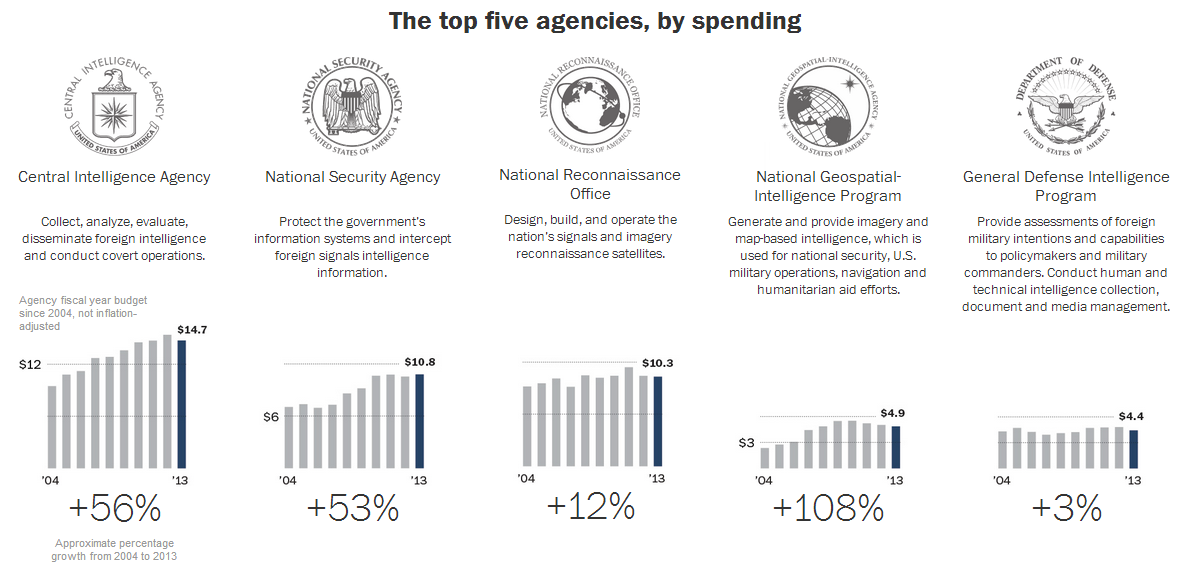
Using documents obtained from former intelligence contractor Edward Snowden, The Washington Post has published the first-ever detailed look at the U.S. government’s intelligence spending — the “black budget,” so called because, though the overall spending figure has been made public since 2007, the specifics have not. For its combination of newsworthiness, clear and efficient presentation of a large amount of complex data, and ease of exploration, the Post’s visualization is our Chart of the Week.
The figures, taken from a February 2012 summary of proposed intelligence spending for the current fiscal year, show that the CIA has the largest slice of the $52.6 billion intelligence budget: $14.7 billion, up 56% since 2004. The National Geospatial-Intelligence Program,which generates imagery and map-based intelligence, had the biggest budget increase among the major intelligence agencies: 108% since 2004.
According to the Post’s data, nearly half ($25.3 billion) of the proposed fiscal 2013 intelligence budget went for data collection, with the CIA and the National Reconnaisance Office accounting for the bulk of that. More than $14 billion was designated for “management, facilities and support,” while data analysis and data processing and exploitation each received more than $6 billion.
